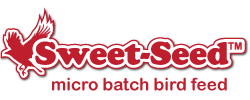Keep Ants and Bees Away From Your Hummingbird Feeders

Hummingbirds are not the only backyard visitors who will take a sweet sip from your nectar feeders. While most backyard birders don't mind other birds getting the occasional drink, insects are rarely welcome. Unfortunately, bees, ants, wasps, hornets and other insects like sugar water just as much as hummingbirds. When insects swarm around a hummingbird feeder, not only do they consume the nectar, but large numbers of insects will discourage hummingbirds from feeding at all. Larger stinging insects, such as wasps and bees, may even be aggressive toward hummingbirds. Backyard birders, however, have many easy ways to keep insects away from the feeders without depriving hummingbirds of a good meal.
8 Ways to Keep Insects Away From Hummingbird Feeders
When insects are taking over a hummingbird feeder, try…
- Hanging the feeder with fishing line - The thin, slippery surface of fishing line is difficult for ants to climb and they cannot reach the feeder. The fishing line needs to be looped very securely, however, but do not use multiple loops of line or else bugs will be able to climb more easily. This technique is easiest to use with smaller, lighter, plastic feeders.
- Keep the nectar level well below the feeding ports - Saucer-style feeders are more difficult for insects to raid if the nectar is at least 20 millimeters (approximately 3/4 inch) below the ports. Hummingbird tongues are long enough to still reach the nectar easily, but insects will not be able to feed comfortably with such low nectar levels.
- Use moats as barriers to keep crawling insects away - Ants are persistent in climbing hooks, chains and poles to reach a nectar feeder, but they cannot cross a water barrier. Some feeders come with built-in ant moats, but they are usually small and will dry out quickly. Add a larger ant moat, such as a cylinder or umbrella design, and keep it filled. Other birds, such as finches, may even quench their thirst from the moat!
- Avoid feeders with yellow accents - Insects see yellow most brightly and clearly. When a nectar feeder has yellow accents, the color is a beacon to attract insects. Remove the accents if possible, or use non-toxic paint to recolor the yellow to red, white or other shades. Take care not to get paint inside the feeding ports, however, and do not use the feeder until the paint is completely dry.
- Keep nectar feeders completely clean and drip-free - When a hummingbird feeders leaks, the sticky spills will attract more insects, and dripping nectar can clog a nectar feeder or stain a deck or patio. Nectar feeders should be washed thoroughly every time they are refilled, and rinse off any areas where nectar has spilled so insects do not congregate in the area.
- Hang feeders in the shade - When nectar feeders overheat, the air pressure in the feeder increases and can create more leaks that attract insects. Furthermore, bees and other insects see more clearly in sunny areas, and may not notice a feeder in the shade as readily. A cooler, shaded spot will keep nectar fresher for longer as well.
- Choose a feeder style with bee guards - Some nectar feeders come with bee and insect guards, mesh that covers the feeding ports and keeps bugs from accessing the nectar. Hummingbirds, however, can still use their long tongues to lick up the nectar effectively and will not be deterred.
- Offer insects a better feeding source - Insects will visit the easiest, most convenient food sources first. Keep them away from hummingbird feeders by offering a better insect feeder in a better spot. Use an open, easily accessible feeder with a slightly sweeter sugar water solution, and hang it in a sunny spot for bugs to find. A yellow feeder will be spotted right away, and insects will quickly take advantage of the bounty.
The best way to discourage insects is to use as many of these deterrent methods as possible. The more tricks you use, the more likely you are to trick insects away from the feeder altogether.
Techniques to Avoid
There are certain techniques to discourage insects from nectar feeders that responsible, conscientious backyard birders will avoid. To keep hummingbirds safe, never use these types of tactics.
- Insect Traps: While one insect trap in your yard will help control bug populations, multiple traps can seriously deplete the numbers of insects in the nearby environment. Many other birds eat insects, and bugs play critical roles in pollination and other natural processes. Too many traps can drastically destroy important insect populations.
- Insecticide: Bug sprays and other toxins should never be sprayed anywhere near bird feeders, including nectar feeders. Even a small amount of these poisons can contaminate nectar and potentially hurt hummingbirds. Large amounts of these chemicals can even be fatal.
- Oils, Waxes or Petroleum Jelly: Smearing cooking oil, cooking spray or petroleum jelly on bird feeder poles or hummingbird feeders may keep insects away, but these substances can also coat hummingbirds' feathers and damage their plumage. This can be just as harmful to hummingbirds as a commercial oil spill.
Avoiding these dangerous techniques while using other ways to keep insects off hummingbird feeders will be the best way to minimize how many insects interfere with nectar feeders.
